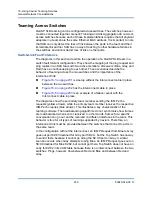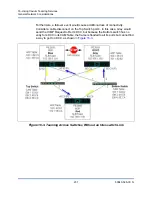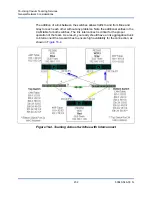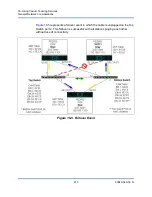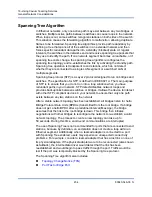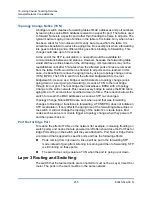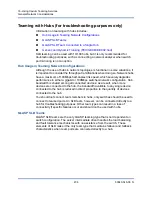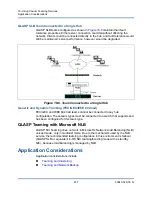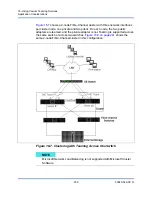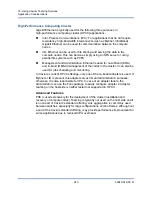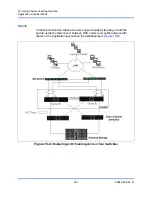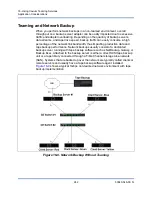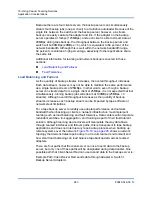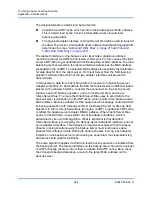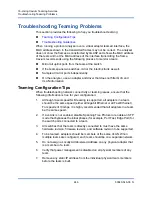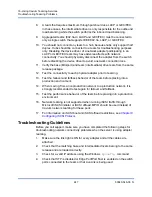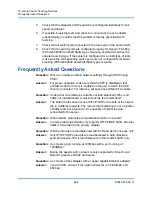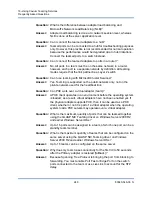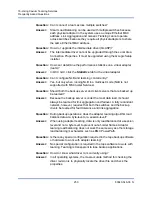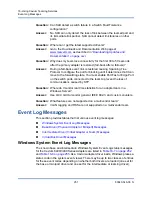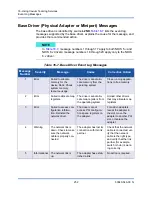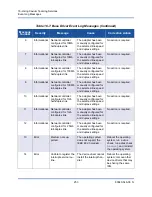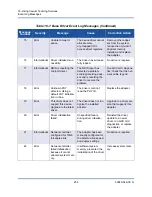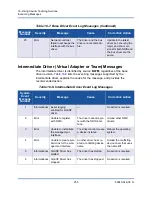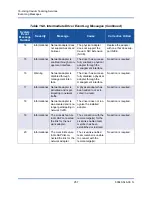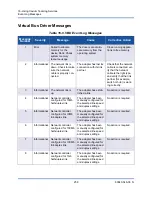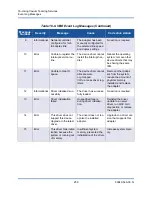
16–Using Cavium Teaming Services
Application Considerations
244
83840-546-00 N
The designated path is determined by two factors:
Client-Server ARP cache, which points to the backup server MAC address.
This is determined by the Cavium intermediate driver inbound load
balancing algorithm.
The physical adapter interface on Client-Server Red will be used to transmit
the data. The Cavium intermediate driver outbound load balancing algorithm
determines this (see
“Outbound Traffic Flow” on page 215
Traffic Flow (SLB Only)” on page 215
The teamed interface on the backup server transmits a gratuitous address
resolution protocol (G-ARP) to Client-Server Red, which in turn causes the client
server ARP cache to get updated with the Backup Server MAC address. The load
balancing mechanism within the teamed interface determines the MAC address
embedded in the G-ARP. The selected MAC address is essentially the destination
for data transfer from the client server. On Client-Server Red, the SLB teaming
algorithm will determine which of the two adapter interfaces will be used to
transmit data.
In this example, data from Client Server Red is received on the backup server
Adapter A interface. To demonstrate the SLB mechanisms when additional load is
placed on the teamed interface, consider the scenario when the backup server
initiates a second backup operation: one to Client-Server Red, and one to
Client-Server Blue. The route that Client-Server Blue uses to send data to the
backup server is dependent on its ARP cache, which points to the backup server
MAC address. Because Adapter A of the backup server is already under load from
its backup operation with Client-Sever Red, the Backup Server invokes its SLB
algorithm to
inform
Client-Server Blue (through a G-ARP) to update its ARP cache
to reflect the backup server Adapter B MAC address. When Client-Server Blue
needs to transmit data, it uses either one of its adapter interfaces, which is
determined by its own SLB algorithm. What is important is that data from
Client-Server Blue is received by the Backup Server Adapter B interface, and not
by its Adapter A interface. This behavior is important because with both backup
streams running simultaneously, the backup server must
load balance
data
streams from different clients. With both backup streams running, each adapter
interface on the backup server is processing an equal load, thus load-balancing
data across both adapter interfaces.
The same algorithm applies if a third and fourth backup operation is initiated from
the backup server. The teamed interface on the backup server transmits a unicast
G-ARP to backup clients to inform them to update their ARP cache. Each client
then transmits backup data along a route to the target MAC address on the
backup server.

